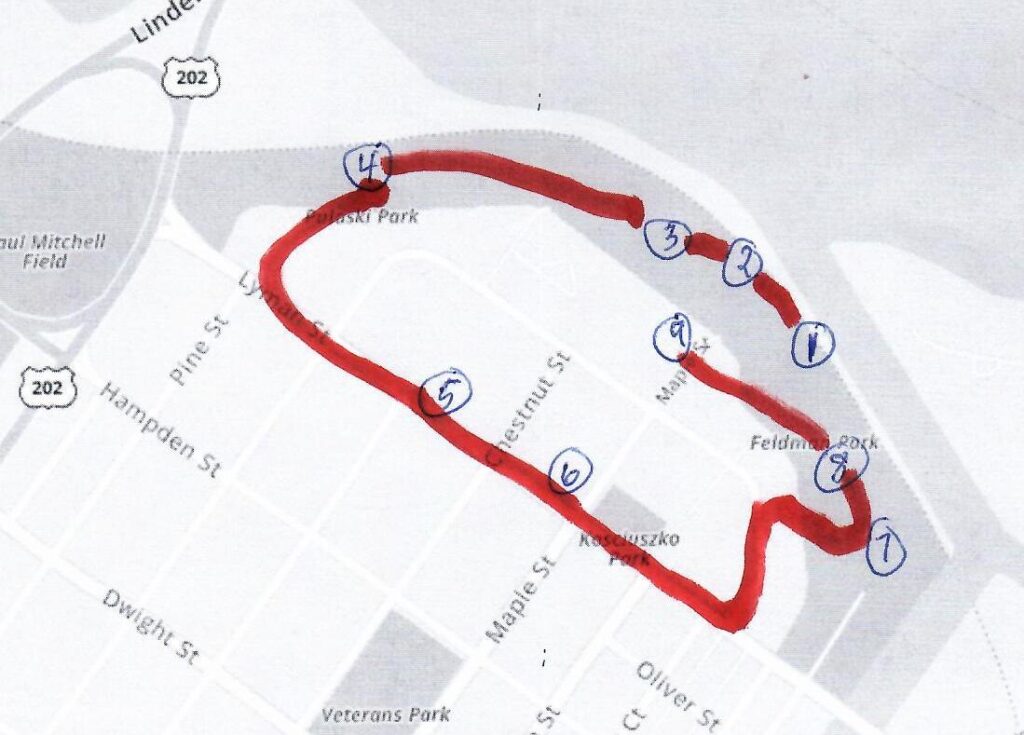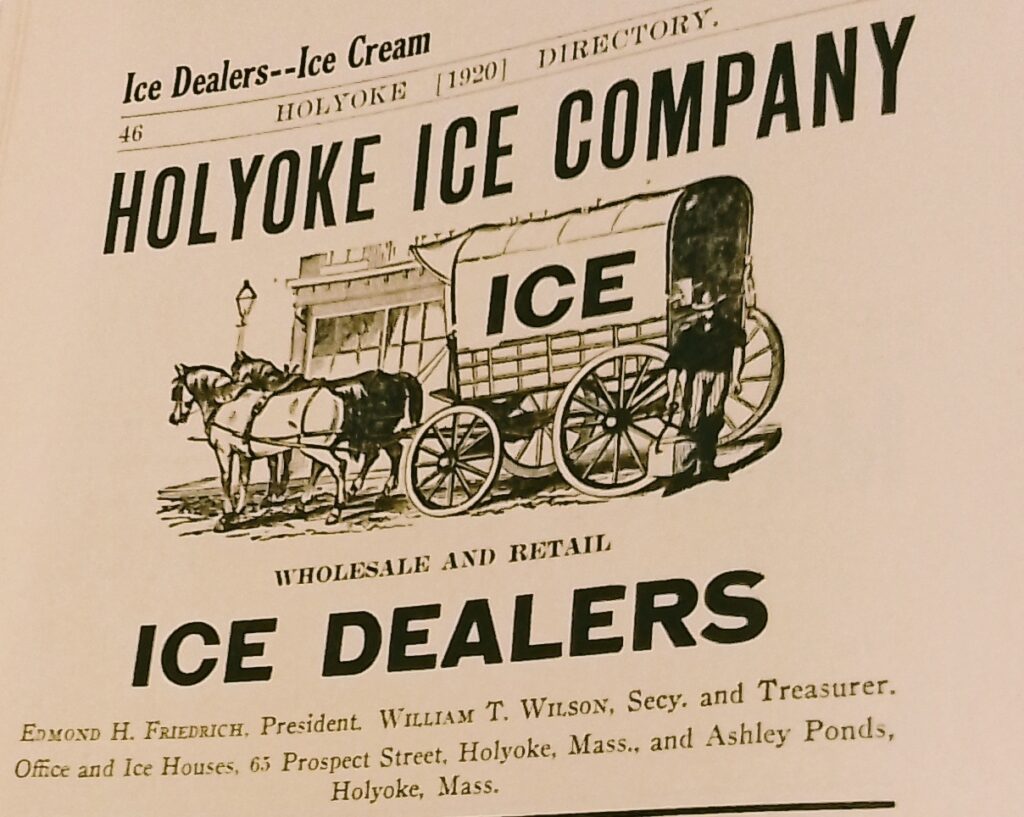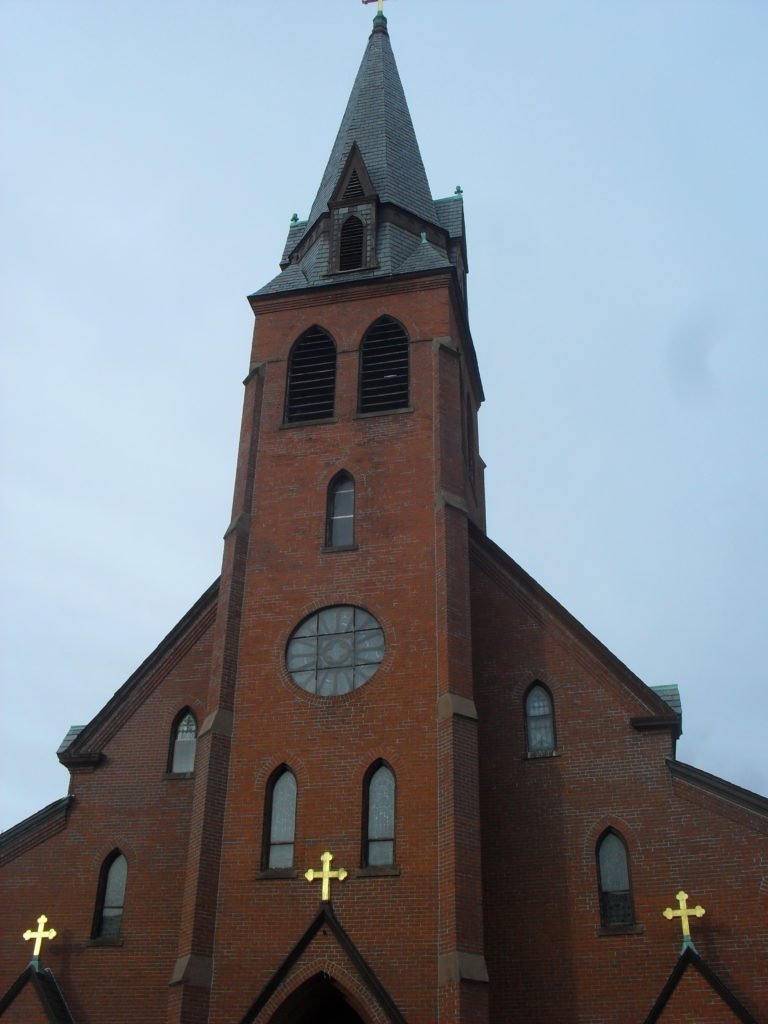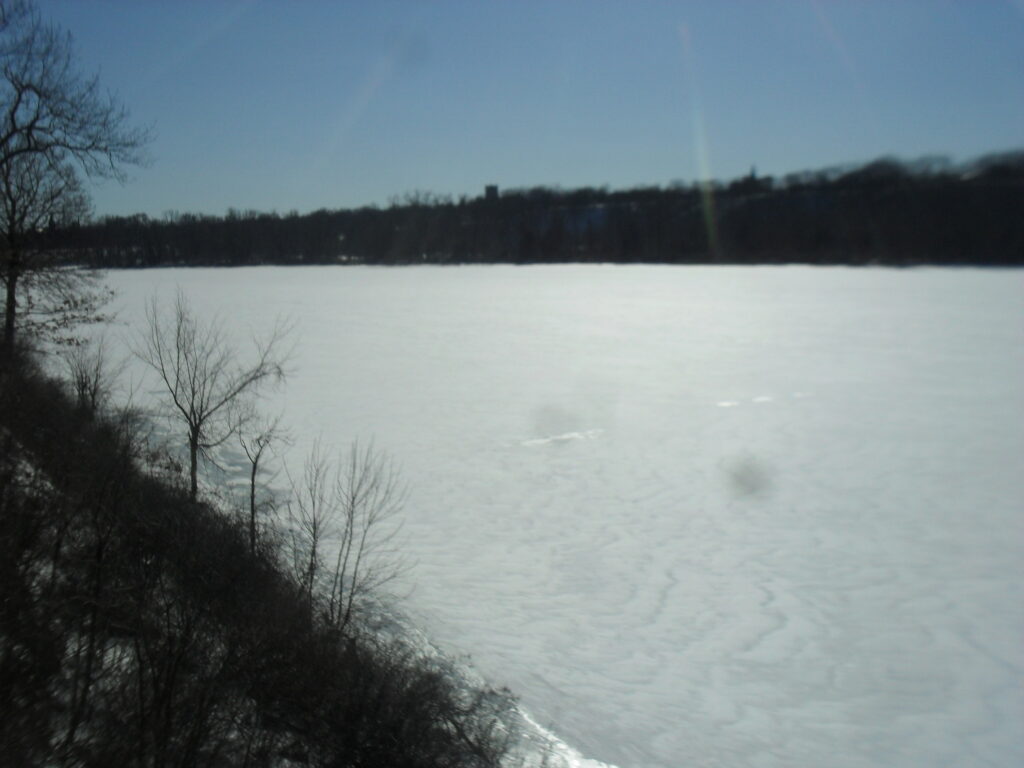Before there was a park here the land was called the Patch. Life was harsh for the early settlers who suffered during cholera and more. Once it took on a parklike quality it was informally called Kerry Park. Then Prospect Park became its official name. Lastly, Pulaski Park. It most have been quite the quaint park since in 1887 goats roamed freely around Prospect Park. Enough damage was done to the point that they were considered a problem. Work has very often been done on the park. The early 1910s Olmsted based work on the park was not the only work since in 1887, for example, 67 trees were planted within the park. Some of those trees might still exist. There were once plans to extend Prospect Park to Highland Park (Jones Point Park). Read at this LINK.
The park was bought from the Holyoke Water Power Company in 1884 to become a true city park. The park is 1,106 feet along Prospect Street and 132 feet deep from there. It is 3 acres in the beginning. In 1885 an ornamental pump was installed to deliver water to people within the park. This was better than the method the year before when park goers would walk down the slope to a pump near the dam. They had to cross the tracks and the railroad company was not happy about that.


- This is part of the Holyoke Heritage Trail so after visiting here get back onto the trail.
- This is one of many Olmsted designs in Holyoke. Read about the rest at this LINK.
- Parks of Holyoke
- Private GROUP TOUR (COSTS) is one hour long for this Pulaski Park and Neighborhood walking tour. Also a one hour indoor presentation can be given.
- Booklets are available for purchase at this PAGE.
- A free public tour comes up every five years.
- VIDEO introduction to the park
- A self-tour is available for anyone using the maps and text seen below. – LOCATION
Stop 1 – Holyoke Canal System and Dam

See the canal tour stop for this location at this LINK.
Two dam houses use to be in the park area to serve as gatehouses for the canal. They have both been moved. The first was brought to Hobart’s Funeral Home on Maple Street and the second to the west side of Beech near Hampden Street.
Stop 2 – Prospect Park as an Olmsted Park

When Prospect Park started in 1884, the views from this location were superb. At first there was no fence but later a wooden fence was added. The wall near the river was put in place in 1903 to 1904. The Olmsteds did not like the wall nor its construction but left it in place in their designs.

In 1910 the plans for Prospect Park were ready. They were extensive and much was done off of those plans.
Finally in 1913 the work on the park was done. New and few walkways were added in lieu of the winding dirt paths. A bandstand and a children’s area was made. Look at the diagram at the top of this section. That is the park before Olmsted.

An inspection of the park now shows that the helter skelter dirt walkways were taken out in lieu of the concrete sidewalks.

Stop 3 – Pulaski Park Memorial

The memorial in the center of the park was dedicated in 1939 when the park was renamed from Prospect Park to Pulaski Park. This memorial is now in line with Chestnut Street but it was not always so. Until 1948 it was in one of the corners of the park but was moved here so more people could see it. The dedication was at the request of medical doctor Julia Bauman. Also that year 12 new trees were planted since the 1938 storm had killed many. (The renaming also might have been helped along by a revamping of the park in 1936 due to a massive flood of that spring. The work trucks dug into the soil of the park and all needed to be redone.)
In 1955 Hurricane Diane would cause major damage to the park. Thus in 1959 twelve more maple trees are added to the park.
There once was a shelter building (opened in the spring of 1915) that allowed children and their parents to get out of the sun. This was located about 200 feet to the NW of this center.
Flowers were planted in some years, for example, in 1966.


Stop 4 – Holyoke Ice Company

The Holyoke Ice Company started at this location in about 1900. They harvested ice from Ashley Reservoir and from Log Cove from 1900 to 1940. Refrigeration changed the company since people needed less ice but the company still existed until 1990.

The land at the corner of Pine, Prospect, and Lyman was purchased in 1924 for a new outdoor pool.

Stop 5 – Prospect Heights Neighborhood
The neighborhood around the park has grown up during the 170 years since it started. There is urban renewal in many places and some old buildings. The building at the southwest corner of Lyman and High Streets is the Gallaudet House. (95 High Street) It might predate the official existence of Holyoke itself. High Street tour and Maple Street tour
The first reservoir for water for Holyoke was in a large vat at the eastern side of Maple Street between Father Kolbe and Lyman Streets. This vat had walls that were 15 feet high and 40 feet thick.
Stop 6 – Mater Dolorosa Church

See my tour on the church at this LINK.
General Tadeusz Kosciuszko Park is nearby. It was dedicated May 21 1999. LINK
Stop 7 – Union Coal

The Union Coal Company was located in the eastern edge of this long park. It served the people of Holyoke from the 1890s to the 1940s. Prospect Streets had its eastern end near here and in fact the driveway of the businesses to the south now use what was Prospect Street.
Stop 8 – Feldman Park

Feldman Park was added to encourage young people to enjoy themselves in this area. Water park and skate parks were added. LOCATION
Stop 9 – Perpetual Help Church
The Perpetual Help Church was built where the Mater Dolorosa School is now. It was a four story building that served all the needs of the people in the area. There was a chapel church convent and school. Read more at the Mater Dolorosa LINK and read about its Chestnut Street church at this LINK.

Sanborn maps of the park:
Sanborn 1884 – does not help
Sanborn 1889 – does not help
Sanborn 1915 and map B
Sanborn 1949 and map B
Sanborn 1956 and map B
